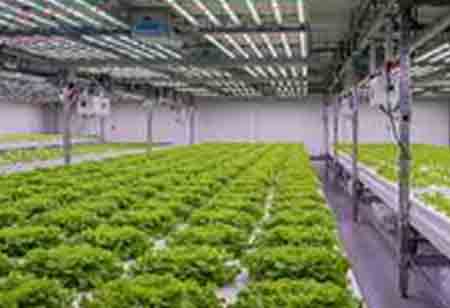Thank you for Subscribing to Agri Business Review Weekly Brief
Indoor Farming: A Revolutionary Approach to Agriculture
Indoor farming facilitates continuous food production throughout the year, significantly reduces water consumption, and promotes the cultivation of healthier and safer food options.

By
Agri Business Review | Thursday, April 24, 2025
Stay ahead of the industry with exclusive feature stories on the top companies, expert insights and the latest news delivered straight to your inbox. Subscribe today.
Fremont, CA: Indoor farming is the practice of cultivating plants indoors, usually under highly regulated conditions. Unlike traditional farming, there is no need to consider weather or seasons. There are various strategies that indoor farming can use to cultivate crops. These include vertical farming and hydroponics.
Unveiling the Different Types of Indoor Farms:
Indoor farming promotes agricultural innovation. It adjusts to various approaches to meet varied requirements. Indoor farming encompasses various methods, with vertical farming, hydroponic farming, and controlled environment agriculture (CEA) being the most prevalent. Each method employs a distinct strategy to facilitate healthy and sustainable indoor cultivation. Vertical farming elevates farming to new heights literally. This strategy saves space on the ground by stacking plants vertically.
This method is a game changer in metropolitan areas. Vertical farming can significantly reduce food miles. Choosing this option benefits both the environment and urban areas. Hydroponic farming does not use soil and instead relies on a nutrient-rich water solution. This strategy enables plants to develop faster and healthier.
Furthermore, controlled environment agriculture (CEA) is all about precision. It regulates every aspect of the environment to meet a plant's requirements. Growers meticulously manage temperature, humidity, light, and CO2 levels to create ideal conditions for indoor harvesting all year. It's the pinnacle of efficiency and control. CEA is revolutionizing perceptions of agriculture by enhancing the predictability and reliability of food production.
Best Indoor Foods to Cultivate at Home:
Indoor farming is not limited to lettuce greens but is a popular indoor crop. Individuals can cultivate various foods indoors. Herbs, fruits, vegetables, and other ingredients are among the alternatives. Each kind of indoor plant benefits from controlled environments. Of course, lettuce and other salad greens flourish inside. They are perfect for hydroponic systems since they grow quickly and do not require extensive roots. Most herbs are ideal for indoor growing.
They require minimal room and grow swiftly. Examples include basil, mint, and cilantro. Many fruits and vegetables flourish effectively inside. Tomatoes, peppers, and strawberries perform well. These plants benefit from controlled lighting and nutrition. Indoor farming can offer fresh, flavorful produce throughout the year.
Key Benefits of Indoor Farming:
Indoor farming has several advantages over traditional farming. These include using less land, conserving water, and producing food year-round. One major advantage of indoor farming is that it requires less land. Indoor farms can be produced inside or on top of existing structures, even in densely populated places. Most indoor growing practices prioritize sustainability. These revolutionary farmers want to raise food on a commercial scale without damaging the environment. Indoor farms also make efficient use of available resources.





